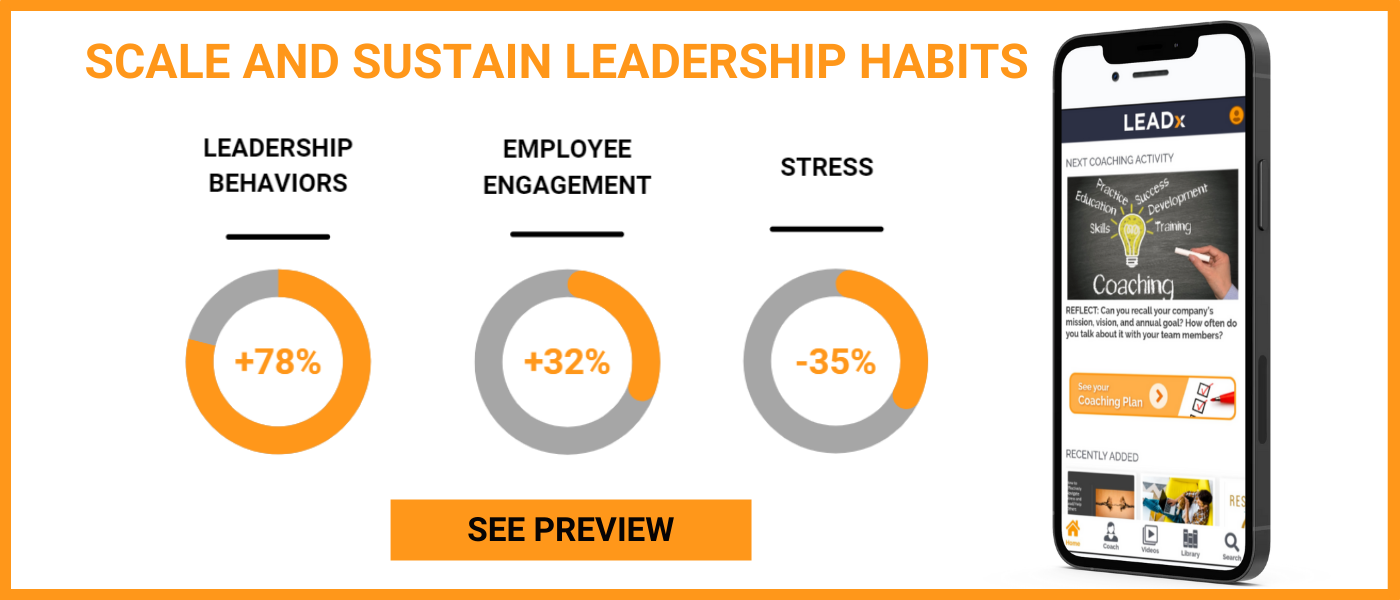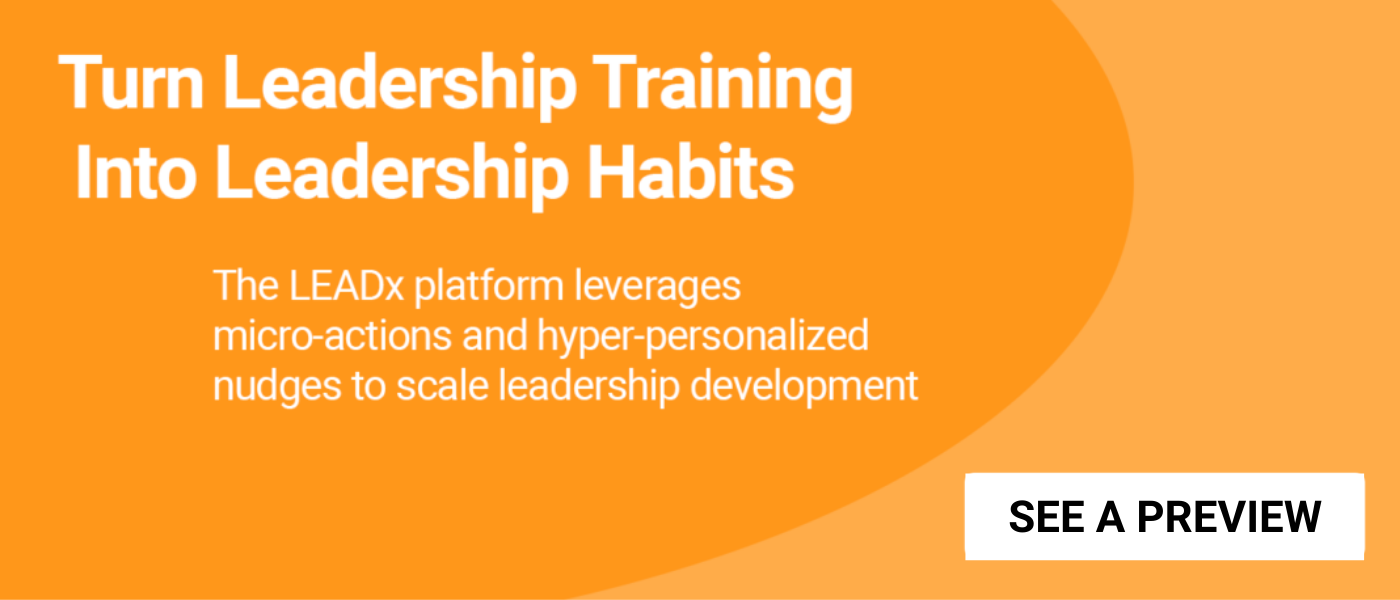
What would happen if leadership development teams hired their best leaders? In marketing, this “hire your best customer” tactic has started to catch on as a highly effective way to bake their customer’s expertise, experience, and viewpoint into their content. The customer perspective makes their marketing content more engaging and valuable to their target audience.
 When it comes to leadership development, Richard Winters, MD, maybe the perfect example of this tactic at play. Dr. Winters splits his time at Mayo Clinic as an emergency physician and the Director of Leadership Development for the Mayo Clinic Care Network. For Dr. Winters, the progression happened naturally. As he climbed the ranks in medicine from emergency physician to Managing Partner to Chair of the Department to President of the Medical Staff, he realized that leadership enabled him to expand his impact beyond single patients at the bedside to providing care to entire populations of patients within a community. To work in leadership development would expand his influence even further.
When it comes to leadership development, Richard Winters, MD, maybe the perfect example of this tactic at play. Dr. Winters splits his time at Mayo Clinic as an emergency physician and the Director of Leadership Development for the Mayo Clinic Care Network. For Dr. Winters, the progression happened naturally. As he climbed the ranks in medicine from emergency physician to Managing Partner to Chair of the Department to President of the Medical Staff, he realized that leadership enabled him to expand his impact beyond single patients at the bedside to providing care to entire populations of patients within a community. To work in leadership development would expand his influence even further.

In this interview, Dr. Winters shares insights from his book You’re The Leader. Now What? : Leadership Lessons from Mayo Clinic, his views on Leadership & Leadership Development, a glimpse into his work as an executive coach and Director of Leadership Development, and more.
This interview is edited for clarity and concision.
The Leadership Structure at Mayo Clinic: Dyads, Triads, and Personnel Committees
Kevin Kruse: Your book describes how Mayo Clinic's leadership structure differs from many other hospitals. Can you describe it here to set the stage?
Dr. Richard Winters: An exceptional thing about Mayo Clinic, one of our core principles, is that we lead in dyads and triads. While it's a physician-run organization, every department and division has a dyad or triad where a physician, nurse, and administrative leader all lead together. To succeed as a leader, you have to be skilled at collaborating and making decisions within your triad. This helps each of our leaders see around their blind spots. These different perspectives help our leaders make more effective decisions.
Another unique leadership component at Mayo Clinic is that we have a Personnel Committee. The personnel committee consists of experienced Mayo Clinic value-aligned physician leaders from different departments. Rather than having departments select their own chairs, the personnel committee selects these important leaders. At other hospitals, for instance, it’s often the case that each department gets together and chooses its leader. For example, emergency physicians select their leader and cardiologists choose their own. The result is that this leader is usually chosen based on their power and their ability to charge through the organization and get what the department needs done. This often creates a siloed “the leader speaks for us” mentality.
At Mayo Clinic, the personnel committee looks for individuals who have proven to work across lines and represent the organization's values. The committee takes the department's input, and individuals in the department are asked to recommend people, but the committee ultimately selects leaders who they think best represent Mayo’s values and mission.
Development through Application: “Bring your most difficult problem.”
Kruse: What kinds of programs and work are you doing to develop leaders?
Dr. Winters: First, I'm an executive coach. I coach Physician Chairs and other leaders at that level or above. That could be physicians, nurses, or administrative leaders.
Second, I put together leadership programs. Last week, 75 leaders from around the world flew into Rochester, Minnesota, for a three-day program. The charge of the program was that leadership dyads and triads bring in their most difficult problem. They came prepared with the single most difficult challenge they were trying to figure out. For some, their situation was, “We've just acquired this other hospital. How do we promote a common value-aligned culture?” Or, “We want to get patients discharged by noon. How do we do that?” Or, “We have this surgery center, and our invested surgeons are using it, but no one else is. How do we improve the utilization there?”
They bring these complex problems, and then we have these teams work together and go through a process of making decisions. First, they work to develop a shared sense of reality, with all of its agreements, disagreements, and different perspectives. Then, they identify multiple options for how they might proceed. Finally, they choose a way forward to, on the one hand, further learn from their environment, and on the other, to drive necessary results.
The Power of Naming: The Six Dimensions of Psychological Well-Being
Kruse: Top of mind for people, especially since the pandemic, and especially in healthcare systems, is burnout. You write about “the six dimensions of psychological well-being” in your book. What are they?
Dr. Winters: There's this idea of “what are the components” that are so valuable for learning, understanding, and applying a concept. I can ask a group of physicians or nurses, “What are the six causes of metabolic acidosis,” and they can rip off the answers no problem. But, if I ask them, “What are the six components of eudaimonic well-being?” I get crickets.
There’s a passage in my book where I write about how I used to go to my mother and say, “My tummy hurts.” Then, I went to medical school, and now I'm like, “Oh, I think something is going on with my splenic flexure. It may be my descending colon.” I learned to name the various components, the anatomy, of what goes on inside me, which helps me think about what's happening when things aren’t going as planned. But, we have leaders who have no concept, no vocabulary, to describe the various components of their and their colleague’s well-being.
The model I use because it was so helpful for me refers to Eudaimonic (or Psychological) Well-Being.” It’s Carol Ryff’s model out of the University of Wisconsin at Madison. To make the model stick, I came up with the acronym PAGERS:
Purpose: “As an individual, are you aligned with the purpose, the mission, and the values of the organization? When there’s a discrepancy, it hurts your sense of well-being.”
Autonomy: “This is the sense that you can speak up and be heard and that your point of view is considered as the decision is made.”
Growth: “This is the sense that you can be better tomorrow than you are today. Growth should be both individual and professional.”
Environmental Mastery: “You have the resources to get your job done. For example, you shouldn’t have to order a urinalysis three times to get one.”
Relations: “You have positive relations with others because negative ones feel terrible and offer no support.”
Self-acceptance: “This is a huge one for leaders at all levels of different organizations. You make mistakes, and this can be quite paralyzing. You need to be forgiving of yourself and move beyond to accept these failures as part of being human.”
The Direct Connection Between Engagement and Burnout at Mayo Clinic
Kruse: How do you approach engagement surveys and training at Mayo Clinic?
Dr. Winters: Mayo Click does an annual, all-staff survey. Additionally, there is a simple nine-question survey derived from research at Mayo Clinic that focuses specifically on the engaging behaviors of leaders. For example, individuals are asked the following questions regarding their immediate supervisor:
- “Do they encourage you to develop your talent and skills?”
- “Do they encourage you to suggest ideas for improvement?”
- “Do they empower you to do your job?”
The survey results generally reveal a bell-shaped engagement curve, and we’ve found that for every one-point increase in an engagement driver (i.e., from a four to a five), we see burnout decrease by seven percent and satisfaction increase by 11%.
5 Takeaways for Leadership Development Pros
- Leadership development impacts lives. As Dr. Winters said about moving from affecting one patient to populations, leadership development professionals operate on the population level.
- Let challenges drive discussions. Ground your training in the practical by having leaders bring in the biggest relevant challenges they’re facing. You can do this with any topic. For example, in a program on effective one-on-ones, you might ask leaders to come in with “the single biggest challenge you’ve faced in your one-on-ones.”
- The power of naming. Like doctors use acronyms and memory tricks to remember critical components and processes in their technical work, leadership development pros should leverage naming to make their most important concepts and processes stick.
- Find your most critical ROI and go on offense. For Dr. Winters, this was burnout. Once he found that a one-point increase in engagement was correlated to a 7% decrease in burnout and an 11% increase in satisfaction, he had a clear, proven path forward. This makes it easy to vouch for and obtain resources. This makes it easy to prove value to busy healthcare professionals during training. And, this makes it easy to remember the value of your work and stay motivated and focused.
- Hire or partner with your best leaders. Hire or partner with your best leaders to show value to participants, bring in real stories and examples, and break down the silo that leadership development often finds itself stuck in.






